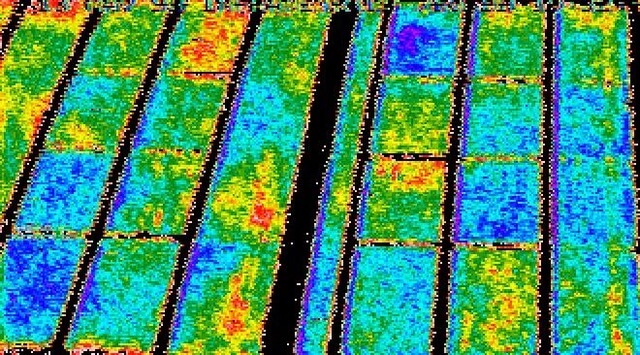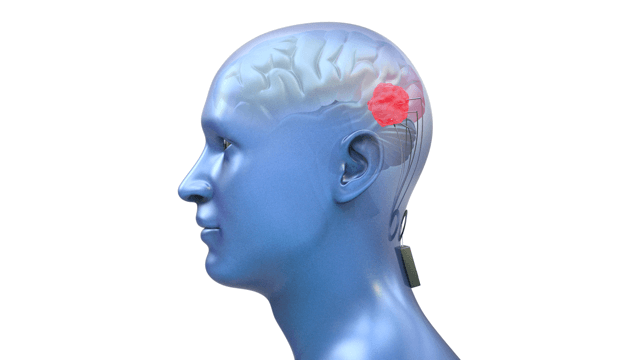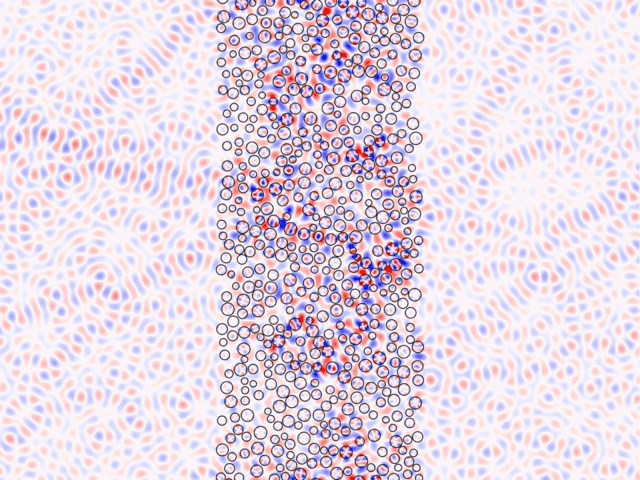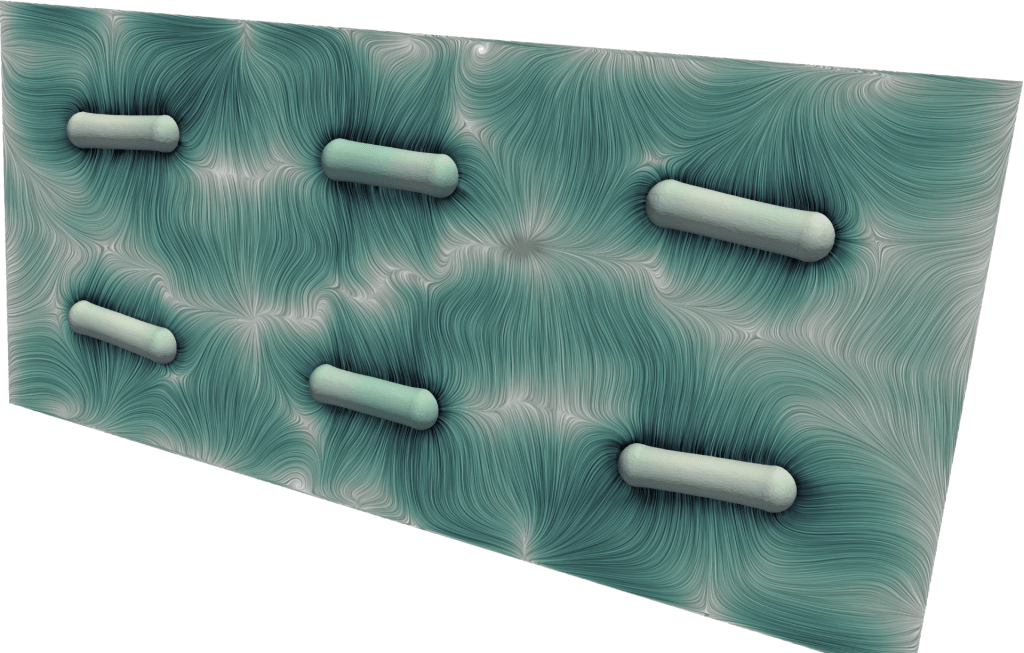MS Applied Physics

Remote-sensing image of irrigation patterns for sustainable agriculture.
General Description
The MS degree in Applied Physics is directed toward students with interests in the engineering of physical systems for which acquisition and interpretation of information requires an understanding of underlying physical models, measurement techniques, and disruptive factors such as noise, turbulence, and spurious signals. Examples include RF electromagnetic or acoustic detection of objects or resources, photonic sources and detection, and design and modeling of aeronautical, mechanical, and biomedical components and systems.
Career opportunities for those who have completed the Master of Science in Applied Physics include aerospace, photonics, remote chemical and environmental sensing, and electromagnetic and mechanical systems engineering.
Admission Requirements
For newly incoming students, refer to USC Viterbi School of Engineering (Fall admission only). For students enrolled in a current USC MS program in ECE or AME, admission requires the completion of EE 604, AME 508, and at least one area entry course (EE 530, EE 570a, AME 506, or AME 509).
Program Structure
The curriculum (28 units, typically 7 courses) includes two required core courses spanning three disciplines that provide foundational knowledge in analytical and algorithmic methods as well as computational physics and techniques of machine learning.
The core courses are augmented through a four-course concentration in one of three disciplines:
- Electromagnetic Wave Propagation and Scattering
- Optics and Photonics
- Mechanics of Fluid and Solid Media
The concentration area is supplemented by a breadth requirement consisting of one course outside the chosen specialization.
Core Analytical Requirement
- EE 604 (Computational Methods in Applied Physics, 4 units)
Most physical models are formulated through differential equations that cannot be solved analytically except in special and simplified scenarios. In this course, students will learn methods for numerically solving linear and nonlinear ordinary differential equations, partial differential equations, and stochastic differential equations.
Topics include Runge–Kutta methods, angular spectrum methods, splitting methods for nonlinear propagation, finite difference discretization, perfectly matched layers, equivalent sources, near-to-far-field transformations, and stochastic integration. Through the examples covered in this class, students will learn about physical phenomena and their applications involving modes and resonances, radar cross sections, metasurfaces, solitons, nonlinear instabilities, and quantitative models of noise mechanisms.
- AME 508 (Machine Learning and Computational Physics, 4 units)
Algorithms in computational physics rely on encoding physical principles to perform predictive tasks on a computer. Machine-learning algorithms, on the other hand, do not rely on an explicit set of physical principles to perform a predictive task. Despite this obvious difference between the two classes of algorithms, there is a remarkable overlap between them. This course will develop an understanding of the overlap and use it to design better predictive algorithms.
Students will learn different types of supervised, semi-supervised and unsupervised machine-learning algorithms. They will learn the inner workings of select techniques in machine learning, with an emphasis on methods from deep learning. They will make connections between certain machine-learning algorithms and continuous differential operators such as those between convolutional neural networks (CNNs) and PDEs, deep residual neural networks and nonlinear ODEs, and spectral clustering methods and weighted Laplacians. They will also learn to develop hybrid predictive models that utilize physics-based methods and machine-learning algorithms for optimal performance.
Concentration Areas
Electromagnetic Wave Propagation and Scattering

Inductively coupled stimulator for potential treatment of a brain-cancer glioblastoma.
This concentration area is geared towards understanding the application of Maxwell’s equations to various physical phenomena of relevance to science and engineering. The material learned promotes career opportunities in remote sensing (e.g., environment and biological), imaging, and electromagnetic systems design (e.g., antennas, radars, and high-frequency devices).
Foundational Course: EE 570a (Advanced Electromagnetic Theory. 4 units)
Applied electromagnetics is the foundation of electrical engineering. When used at sufficiently low frequencies it reduces to Kirchoff's voltage and current laws and yields powerful circuit techniques. When used at sufficiently high frequencies, it reduces to ray techniques and yields powerful tools for optics. At intermediate frequencies, no approximations are widely applicable, and electromagnetics must be considered in full generality, as provided by Maxwell's equations. The fundamental goal of EE 570a is to provide students with a deep understanding of Maxwell's equations and how to apply them analytically and effectively to accommodate advanced-level electrical engineering devices and applications.
Area Elective Courses
EE 551 Principles of Radar (4 units)
EE 570b Advanced Electromagnetic Theory (4 units)
EE 571 Wave Interactions with Random and Inhomogeneous Media (4 units)
EE 573a Antenna Systems Engineering (4 units)
EE 573b Antenna Systems Engineering (4 units)
EE 578 Computational Electromagnetics for Engineers (4 units)
Photonics and Optics

Controlling scatting of light through an inhomogeneous medium can dramatically enhance imaging for medical, automotive, and many other applications.
This concentration area focuses on fundamentals of light-matter interaction and its application to modern engineering. Career opportunities include the design of optical components and sub-systems, intelligent imaging systems, and related advanced signal-processing technologies.
Foundational Course: EE 530 (Optical Materials, Instruments, and Devices. 4 units)
EE 530 surveys the fundamentals of optical materials, instruments, and devices, including light sources, modulators, and detectors, design and theory of optical instruments and components, and emerging trends in on-chip photonics, nonlinear, and quantum optics. Successful completion of the course will allow students to gain a comprehensive understanding of optical technologies, providing a basis for design of optical systems for applications in communications, sensing, imaging, and quantum information processing.
Area Elective Courses
EE 529 Optics (4 units)
EE 531 Non-Linear Optics (4 units)
EE 539 Engineering Quantum Mechanics (4 units)
EE 540 Introduction to Quantum Electronics (4 units)
EE 566 Optical Information Processing (4 units)
Mechanics of Fluid and Solid Media

Flow field around solid grains undergoing rapid phase change in a chamber.
This concentration area focuses on understanding, developing and solving the basic physical principles of fluid and solid behavior. The principles and techniques learned within the courses in this discipline find applications in aerospace, manufacturing, biomedical, civil and environmental science, and engineering.
Foundational-Course Alternatives: AME 506 or AME 509
- AME 506 - Continuum Mechanics (4 units)
This course provides a unified development of the mathematical description for modeling a continuum. It will be useful for any beginning or advanced graduate student planning to study solid and fluid mechanics. It offers a unified introduction to topics like elasticity, inelastic material modeling, and simple and complex fluid behavior.
- AME 509 - Applied Elasticity (4 units)
This course describes the principles of elasticity and their application in applied physics and engineering. Topics covered include, the mathematical foundation of continuum mechanics, three fundamental relations of elasticity, analytical methods for elasticity problems, introduction to the finite element method, and theory of beams and plates.
Area Elective Courses
AME 511 Compressible Gas Dynamics (4 units)
AME 513a Fundamentals and Applications of Combustion (4 units)
AME 513b Fundamentals and Applications of Combustion (4 units)
AME 515 Advanced Heat and Mass Diffusion (4 units)
AME 521 Engineering Vibrations II (4 units)
AME 530a Fluid Mechanics (4 units)
AME 530b Fluid Mechanics (4 units)
AME 630 Transition to Chaos in Dynamical Systems (4 units)


